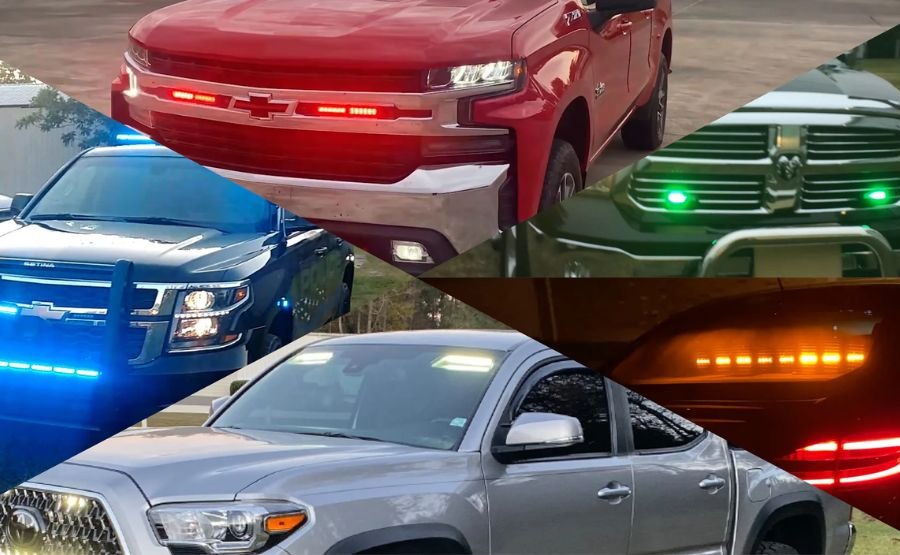How To Ensure Compatibility Between Different Brands Of Emergency Vehicle Lights
For emergency responders and fleet managers, having correctly functioning emergency lights is not just about compliance—it’s a matter of safety and effectiveness during critical situations. But how can you ensure compatibility between different brands of emergency vehicle lights?
The most reliable way to ensure compatibility between different brands of emergency vehicle lights is to verify they operate on the same voltage (typically 12V DC) and use standardized wiring connectors like SAE J1128 or DIN standards. Check manufacturer specifications before purchase.
While this answer provides the basic technical requirements, you’ll want to continue reading to understand important considerations about synchronization patterns, flash rates, and control system integration—factors that could affect your emergency lighting system’s overall performance and legal compliance.
Understanding Flash Patterns And Synchronization Requirements
When mixing different brands of emergency lights, synchronization becomes critical. Most modern LED emergency lights offer multiple flash patterns, but not all patterns will synchronize properly across brands. The Society of Automotive Engineers (SAE) recommends specific flashes between 60-240 per minute for optimal visibility and recognition.
To ensure proper synchronization, it’s best to use lights that can be programmed to match these standard patterns, even if they’re from different manufacturers. Many premium emergency light models include synchronization modules that can adjust to match existing systems, making integration simpler across brand boundaries while maintaining the crucial timing that makes emergency lights effective at clearing traffic.
Control System Integration Challenges With Mixed-Brand Emergency Lights
The control system serves as the brain of your emergency lighting setup. While most modern controllers are designed to work with various brands, compatibility issues can arise with certain advanced features. Some manufacturers use proprietary control protocols that may limit functionality when mixed with other brands.
To avoid these limitations, look for lights and controllers that support standard protocols like SAE J1455 or are listed explicitly as cross-compatible with major brands. Many manufacturers now offer universal control boxes that can communicate with various light models, providing a cost-effective solution for fleet managers who need to integrate different brands into a cohesive system.
Meeting Legal Requirements With Mixed Emergency Light Systems
Emergency vehicle lighting must comply with specific regulations that vary by jurisdiction and vehicle type. When mixing brands, ensure that the combined system meets all applicable standards, including color requirements (SAE J578), photometric requirements (SAE J595), and mounting specifications. Documentation from each manufacturer should clearly state compliance with these standards.
Remember that while individual components may be compliant, the entire system must work together to meet these requirements. It’s advisable to consult with a certified emergency vehicle technician who can evaluate your mixed-brand setup and confirm it meets all relevant standards before deployment. This expert review can prevent potential legal issues and ensure maximum safety for emergency responders and the public.
Power Management And Load Balancing For Mixed Emergency Light Systems
When combining different brands of emergency lights, proper power management becomes essential. Each light draws a specific amount of current, and the total load must not exceed your vehicle’s electrical system capacity. A typical emergency vehicle alternator provides 100-200 amps, but heavy-duty LED light bars can collectively draw significant power.
Calculate the total amperage draw of all lights and ensure you maintain a 20% power reserve for other vehicle systems. Consider installing a power management module to prevent electrical system overload. This approach extends the life of your lighting system and ensures critical vehicle functions remain operational during emergency responses. Modern power distribution systems can automatically prioritize essential components if power demands approach system limits.
Troubleshooting Common Issues With Mixed-Brand Emergency Lights
Mixed-brand systems can present unique challenges when problems arise. Start by isolating issues to determine if they’re related to individual units or system-wide. Common problems include irregular flash patterns, dimming lights, or complete failure of certain units. Keep detailed documentation of each component’s specifications and wiring diagrams.
When troubleshooting, verify ground connections first, as poor grounding is a frequent cause of compatibility issues. Consider installing a diagnostic module that can monitor the performance of all connected lights, regardless of brand, to quickly identify and resolve problems before they become critical. Regular maintenance checks are especially important with mixed systems, as slight variations in performance can indicate potential compatibility issues before they lead to system failure.
Taking The Next Step With Your Emergency Light System
Before making any purchases for your mixed-brand emergency lighting setup, create a detailed spreadsheet listing the technical specifications of your existing lights and any new units you’re considering. Include voltage requirements, amperage draw, flash patterns, and control protocols for each unit. This simple planning step will help you avoid costly compatibility issues and ensure your emergency lighting system performs reliably when it matters most.







